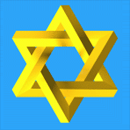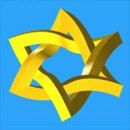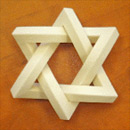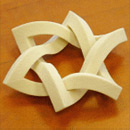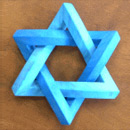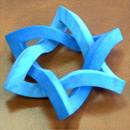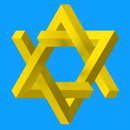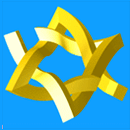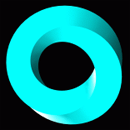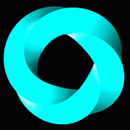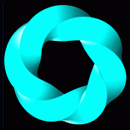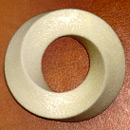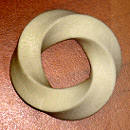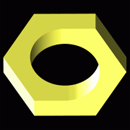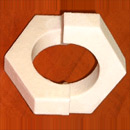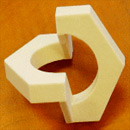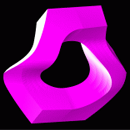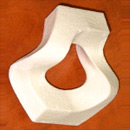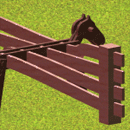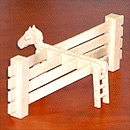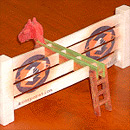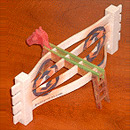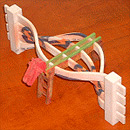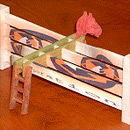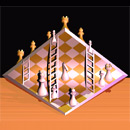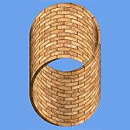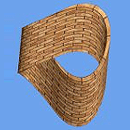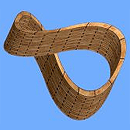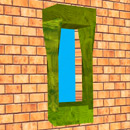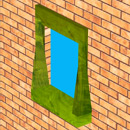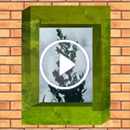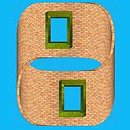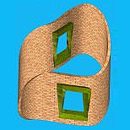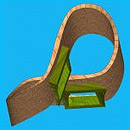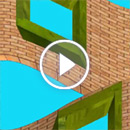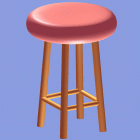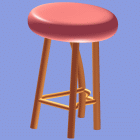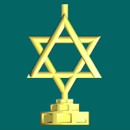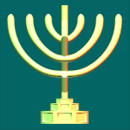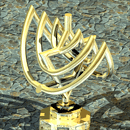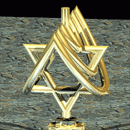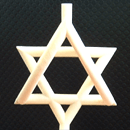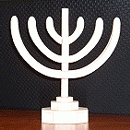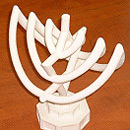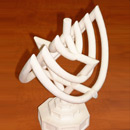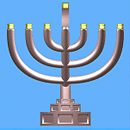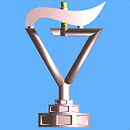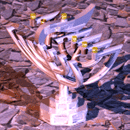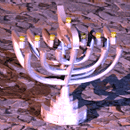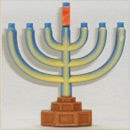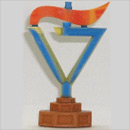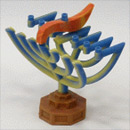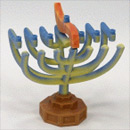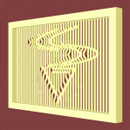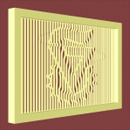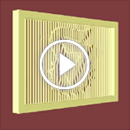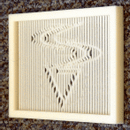This page looks at other art work of impossible illusions, beyond the artwork of M.C. Escher. Herein again, we show that many of the illusions look impossible yet could be realized. This work below presents some of these three-dimensional models that were designed and built using geometric modeling and computer graphics tools.
In the following sequences, figures are frequently presented in pairs. The left figure in each pair is the front view-Escher's drawing's direction, whereas the right figure gives a general view. Whenever a real, tangible model has been created, it will be presented as a second pair to the right of the pair of computer rendered images. The objects were physically realized with the aid of layered manufacturing systems: a Z402 3D Printer from Zcorporation and a Stratasys FDM3000 printing machine. Click on any image below to get the full size version of these images.
We start with two of the Penrose triangle objects (also independently invented by Oscar Reutersvard) intertwined together only to create the david star shape... An STL geometry file, for those of you with layered manufacturing devices, of this model, is available here .
The impossible torus is, in fact, a very possible object. One can easily construct it in any solid modeler by sweeping a square shape along a circle trajectory, while the square is rotated. The four instances of the impossible torus differ from each other only by the amount the square cross section is rotated while swept along the 360 degrees of the circle, starting from 90 degrees rotation on the left, all the way to 360 degree in the right example.
The hex nut is another quite known example of impossible shapes. Here again, one can construct a real 3D object that from a certain view will look like the impossible hexnut.
Here is another, continuous way, of making a 3D object that looks like the infamous impossible hexnut for a certain view location.
The original "impossible" art work of Sandro Del-Prete called the "Garden Fence" is realized here as a 3D model that is similar to the original drawing from one view point.
ZCorp (Can you recognize the logo?) has the ability to build colored models nowadays, so here we take advantage of this feature.
Another original "impossible" art work of Sandro Del-Prete called the "Folded Chess Set" is realized here as a 3D model that is similar to the original drawing from one view point. This is a simple one as it is merely a folded chess board...
An "impossible" cylinder art work by Istvan Orosz (A poster design) is realized here. This cylinder is, in fact, a double-twist Moebius ring.
A simple variation on an "impossible" art work by Jos de Mey ("Curious Wagtail in a Strange Small Window") is realized here. This is one window out of quite a few renditions out there. Try this animation, to see this window from different angles.
Combining the above two drawings, we have these impossible windows inside the impossible cylinder. Try this animation, to see this cylinder with windows from different angles.
This impossible stool is created using a special "impossible models" modeling package that is part of the GuIrit modeling environment.
The fact that in three-space we have three orthogonal views for a model, allows one to design three-dimensional objects that look completely different from different direction and are completely independent. Herein, we mold together the david-star and the Menorah emblem of Israel. © Copyright, Gershon Elber 2003-2019.
Here is another variant with the Menora on one view and the Technion's logo on the other. © Copyright, Gershon Elber 2004-2019.
Victor vasarely has a (not so known) drawing of a horse in which parallel lines are shifted in the planar drawing to give the illusion of a three-dimensional object, or depth. Here we exploit a similar idea to construct bars that are twisted independently in X and Y so that two independent pictures could be seen from the Y and X directions. The logo of the Technion (right) and of its CS department (left) are etched into these two directions. © Copyright, Gershon Elber 2003-2019.
Here is the real, tangible, piece.
Also, one can order these vertical lines at random. Try this animation, as an example.
Yaacov Agam introduced the idea of presenting two different images via a zigzag structure (also known as lenticular printing in the micro level). Herein we extend this idea to three different images from three different views. Shown: a general view (top left), a view of Ben Gurion (top right), a view of Herzl (bottom left), and a view of Rabin (bottom right). The animation shows the model as it is continuously rotated. Made using ZCorp technology. (C) Copyright, Gershon Elber 2003-2019.
See also Escher for Real
I would like to acknowledge Ronit Schneor, ME, Technion and Sam Drake, CS/ME, University of Utah for their help in the making of these objects. I am also grateful to Zvika Grinberg, Caliber, ZCorp Israeli rep., for his aid in making the colored models.
This page is © Copyrighted to Gershon Elber, 2002-2019. Permission to copy in parts or as a whole the content of this page must be given by Gershon Elber prior to any such use.
All M.C. Escher works © the M.C. Escher Company B.V. - Baarn - the Netherlands. Used by permission. All rights reserved.
